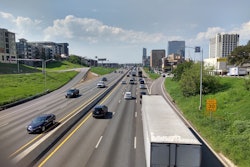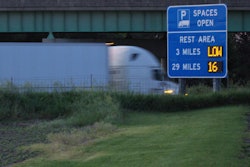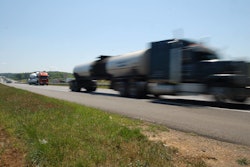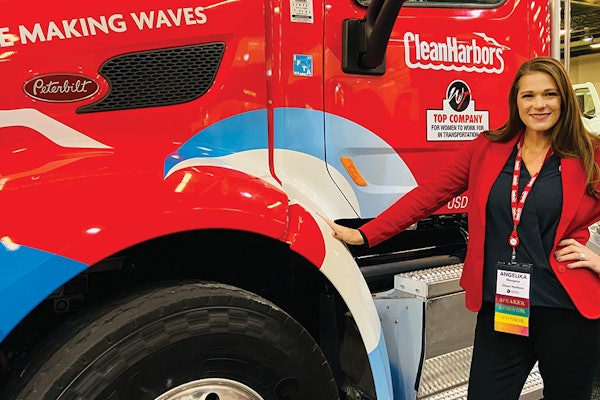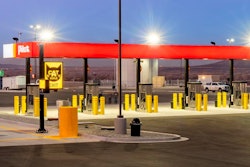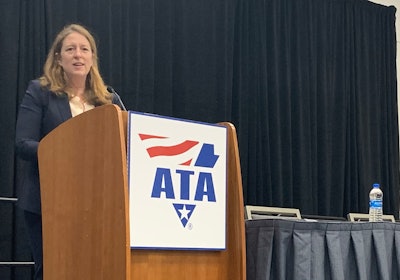
Robin Hutcheson, President Joe Biden's pick to lead the Federal Motor Carrier Safety Administration (FMCSA), was confirmed by the Senate last month, becoming the agency's first administrator in the post-pandemic era. However, she's not basking in the glow of becoming the agency's first full-time boss in nearly three years.
Hutcheson, speaking at the American Trucking Associations Management Conference and Exhibition in San Diego Saturday afternoon, was named Deputy Administrator in January and immediately became Acting Administrator on the heels of then-Acting Admin Meera Joshi's resignation.
In the past 10 months, Hutcheson said her focus has been on better understanding the journey of goods from their origin, to being loaded on a truck and then on to the end consumer. As part of that quest, she said she learned to drive a manual transmission and rode along with a truck driver delivering meat products in Wisconsin.
[Related: Speed limiters, automatic emergency braking lead FMCSA's 2023 agenda]
Hutcheson will lead FMCSA through an upcoming agenda that includes a number of trucking rulemaking proposals, including speed limiters, changes to broker and freight forwarder financial responsibilities, the safe integration of automated driving systems-equipped trucks, automatic emergency braking systems, and safety fitness procedures.
Speed limiter regulation appears to have a considerable head of steam, having resurfaced earlier this year and garnering more than 14,000 comments during an open comment period that concluded this summer. Speed limiters, for the first time, cracked the American Transportation Research Institute's (ATRI) annual Top Industry Issues report, which was released barely an hour before Hutcheson addressed ATA attendees.
Safety is a word you'll hear from Hutechson frequently, and rightfully so, as her agency is charged with regulating and providing safety oversight of commercial motor vehicles. However, she foresees fulfilling that mission via a multi-pronged approach: one that includes evaluating and deploying current and emerging technologies backed by data that supports their use case.
"Zero is the right number of fatalities on our nation's roadways," Hutcheson said, noting a Safe System Approach that focuses on five key objectives: safer people, safer roads, safer vehicles, safer speeds and post-crash care.
Technology enabled
FMCSA Chief Counsel Earl Adams said the agency has been working to understand autonomy and talking to and learning from developers, OEMs and fleet operators to craft an approach to the widespread adoption of autonomous driving technologies, seeing them as an enabler of safety.
Enabling safety is one thing; incentivizing and rewarding it is another. To date, that's been elusive to trucking's regulatory arm.
A "beyond compliance" program was mandated by Congress nearly seven years ago to credit or improve the Safety Measurement System percentiles for motor carriers who voluntarily install advanced safety equipment, use enhanced driver fitness measures, and adopt fleet safety management tools, technologies and programs. That program is no closer to implementation today than it was when the FAST Act, the bill that mandated its creation, was passed in 2015.
"The problem is it's a great concept, but how do we know what's working," asked FMCSA Chief Safety Officer and Assistant Administrator Jack Van Steenberg. "When do we give you credit? We regulate 600,000 carriers out there. How do we manage that fairly for all the carriers out there?"
When accidents do occur, Hutcheson said they need to be studied more closely. The Large Truck Crash Causation Study identifies areas that need to be addressed by effective crash countermeasures, but it hasn't been updated in nearly 20 years. Bringing that data current, Hutcheson said, is a priority for her office, but updating the "decades old" study will not be a quick process.
"The study has a long lead time because that’s what good data requires," she said.
Truck parking
The Department of Transportation and FMCSA, Hutcheson said, seeks to alleviate a truck parking crunch to the extent possible as driver fatigue is a contributor in one of every seven motor vehicle crashes.
"If [truck drivers] can't rest, they are less likely to be as safe as they possibly can," she said.
Hutcheson added that she won't settle simply for "more" truck parking; rather, she seeks safe and viable places for trucks to park and for drivers to rest.
U.S. Transportation Secretary Pete Buttigieg in September sent a letter to ATA President and CEO Chris Spear pledging the Administration’s commitment on the issue and detailing various competitive grant programs under the Bipartisan Infrastructure Law that can fund truck parking projects. The U.S. Department of Transportation also issued official guidance on funding eligibility requirements for states as they plan new truck parking projects. In recent weeks, Florida and Tennessee were awarded INFRA grants by USDOT totaling $37 million to expand truck parking capacity. The American Trucking Associations’ Law Enforcement Advisory Board (LEAB) this month sent a letter to all 50 governors and state departments of transportation urging them to apply for federal funds to expand truck parking capacity.
Diversity in trucking
Hutcheson noted the DOT is excited to kick off its Women Advisory Board, adding she was hopeful the board will encourage more women to explore careers in trucking while also fostering peer-to-peer mentorship. Fleet leadership joining the board include Laura Duryea, Boyle Transportation's manager of recruiting, retention and driver development; Soledad Munoz Smith, vice president of operations at Munoz Trucking, a minority family-owned 133-truck business in El Paso, Texas; and Amazon Director of Transportation Marie Druckenmiller. Company drivers include Emily Plummer from Prime Inc., where she also serves as a driver trainer; Kellylynn McLaughlin, of Schneider National, where she too is a driver trainer; and J.B. Hunt Intermodal Driver and mentor Marquita Jones.

